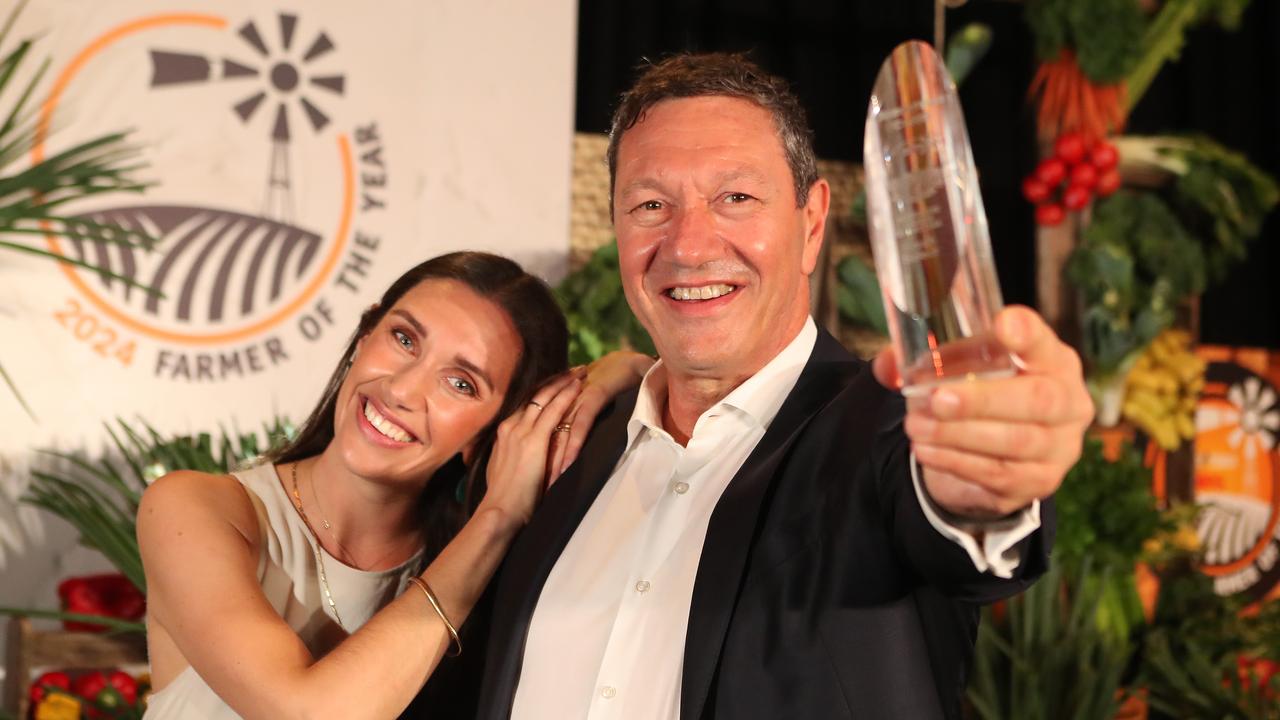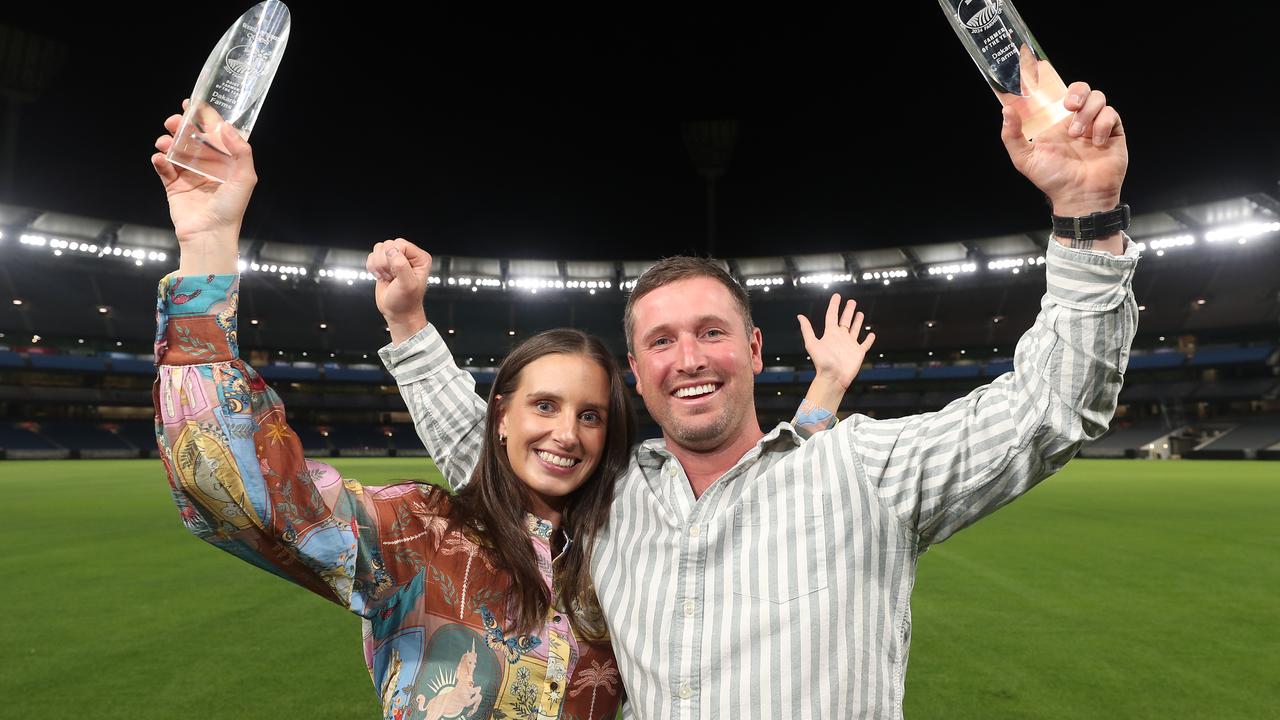Davilak Pastoral, Lakala Pastoral, JS Grazing vie for beef farmer of the year
Three family beef operations are in the running to be crowned best of the year. Meet them and see how they’re improving on one of Australia’s oldest industries.
Three cattle-farming families who are making great gains in productivity, profitability and sustainability have earnt places as finalists in the beef category of The Weekly Times Coles 2022 Farmer of the Year awards.
Stay tuned for the announcement of the six category award recipients and overall winner on Friday 24 February.
MANNING FAMILY
DAVILAK PASTORAL
MANSFIELD, VIC
A cattle operation with humble beginnings has morphed into a beef powerhouse thanks to a two-fold dedication to breeding and business.
Starting with just 40 Angus cows on 100 hectares four decades ago, the Manning family has grown their Davilak Pastoral operation to a herd of 2000 high-quality breeders run across six properties near Mansfield, in North East Victoria.
Even with the massive growth, Rod Manning and his son, Rodda, retain a firm focus on their core philosophy – concentrate on quality and know your figures.

Each year, the Mannings sell hundreds of calves during Victoria’s famed annual weaner sales, many to repeat buyers.
Genetics play a big role in their success, with the family buying all their bulls for their 70-strong bull team from Glendaloch Angus, at Yea.
Rod and Rodda also know what makes cattle production tick – and that’s good pastures. Feed on their high rainfall country, which receives 780-800mm a year, lays the groundwork for efficient production, and knowing the value of that feed can influence the performance of cattle.
Their secret is matching the feed in paddocks to their animals’ requirements to optimise production.
Alongside dedication to breeding and pasture management, the family pays equally important attention to finances.
Former veterinarian and farm business consultant Rod wears two hats – one as cattle breeder and one as analyst.
While their expansive, healthy pastures allow the Mannings to run more cattle, as their stocking rates rise, so too does business risk.
So, they have put concerted effort into cutting as much risk as they can, particularly with an increasingly variable climate.
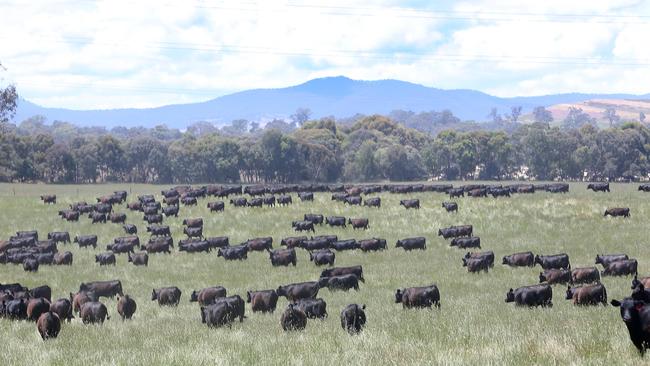
“Where we can take control is in our cost of production – we can’t worry about prices,” Rod says.
In addition to putting money aside in Farm Management Deposits during good times, they have leveraged economies of scale, efficient labour, good infrastructure and computer modelling to plan drought feeding regimes.
Their most recent calculation is that Davilak can produce beef, sold out the gate including finance costs, for an impressive $1.40/kg.
It’s clear the Mannings definitely know how to make the numbers stack up.
COLIN AND KAREN HENKE
LAKALA PASTORAL COMPANY
MUMBANNAR, VIC
Profitability, efficiency and sustainability are three words firmly at the top of Colin and Karen Henke’s vocabularies.
The couple, who runs 1000 Angus cows as part of their Lakala Pastoral Company spread across 1000 hectares at Mumbannar, near the South Australian border in far southwest Victoria, have their eyes firmly fixed on the beef-farming prize.
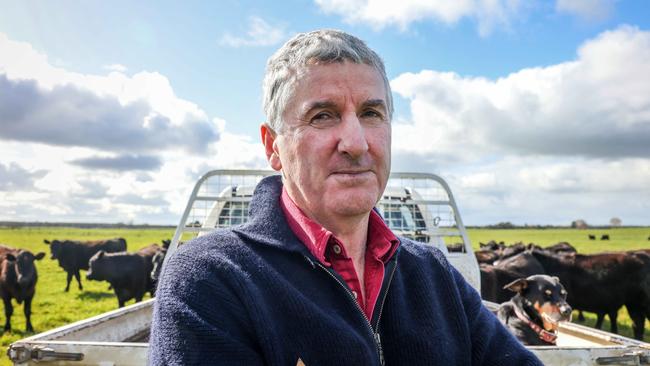
That prize, in their case, being the most efficient form of beef production – steers and heifers to feedlots and pregnancy-tested-in-calf females to other farmers.
The Henkes’ motive is not unlike many farmers – to service debt from the purchase of their property which they bought as part of a young farmer scheme in 1998.
After two decades operating an equal split of prime lambs and autumn-calving beef herd, the Henkes switched to a 100 per cent spring-calving Angus beef herd five years ago.
The move, Colin says, made economic sense with calves born at a time of peak feed production, allowing for a 20-30 per cent increase in cow numbers on the same area of land. Beef farming, the Henkes concede, is about getting the sums right.
“We like to look at what we can produce on a kilogram per hectare basis,” he says. “We find that more applicable than looking at the amount you are producing and the price for the product.
“Calculating kilograms per hectare means year-in year-out the productivity measure is the same.”
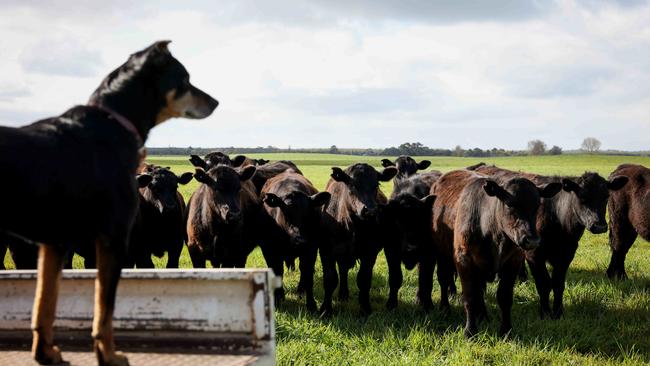
Crucial to the Henkes’ quest for the best is genetics. Lakala is a member of the highly-revered Team Te Mania program, which gives them access to subsidised genetics through a three-year bull leasing program with Te Mania – one of Australia’s leading Angus studs. In return Te Mania receives data and feedback from the genetics.
Colin says this allowed them affordable access to bulls in the 15-20 per cent of the breed – genetics they otherwise might not have been able to access.
The Henkes target the short to medium feedlot market, with steers sold direct at 470-500kg and heifers at 430-500kg. The first steers generally reach that weight at about 14 months old, off grass.
Colin says selling direct to feedlot fits in well with their production system.
“The feedlot industry is ready made for, and is economical, for a pasture-based breeding system,” he says.
In short it makes dollars and sense.
SHAW FAMILY
JS GRAZING
INJUNE, QLD
Vertically integrating a feedlot into their beef business to garner more control over the supply chain, and inevitably make more money, has been a Shaw thing for Queensland’s JS Grazing.
Jeremy and Julie Shaw, from Injune, about 600km northwest of Brisbane, traditionally sold 80 per cent of their calves as weaners at Roma saleyards each year but saw an opening in early 2020 to reinstate their on-farm feedlot, which hadn’t been used for 20 years.
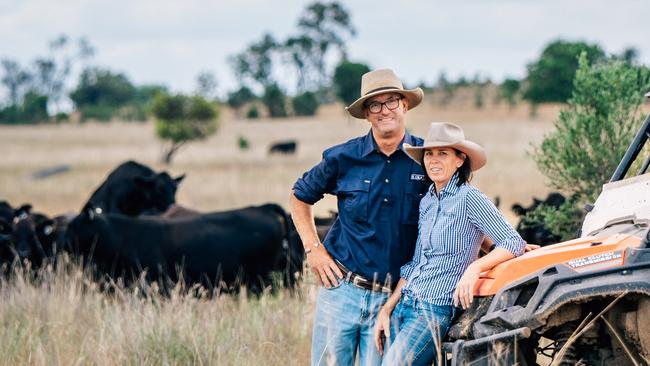
The decision to finish their own calves has enabled the couple to take a strategic step forward financially with the 13 to 18-month-old lot-fed steers averaging a massive $10/kg carcass weight and topping at more than $3200 a head.
“We did very well with selling weaner steers but we took the opportunity to take another step in the supply chain and vertically integrate it a bit more you’d say. There’s money in it,” Jeremy says.
“I always said we’d take $1000 and let someone else make the next $400 but we started wanting that next $400.”
The Shaws run 1600 Angus breeders over an aggregation of four properties near Injune encompassing 9315 hectares and another 2228 hectares at Longvale.
They don’t grow any grain or hay, but buy feed locally and mix their own feedlot ration.
Traditionally their herd has calved in spring. But to spread out supply for the feedlot and make more efficient use of their bulls, they have transitioned in the past 12 months to include 400 autumn calvers. Heifers are still sold at Roma saleyards due to strong demand from repeat buyers, but steers are fed for 80-100 days to reach 280-300kg dressed weight and are sold direct to Coles.
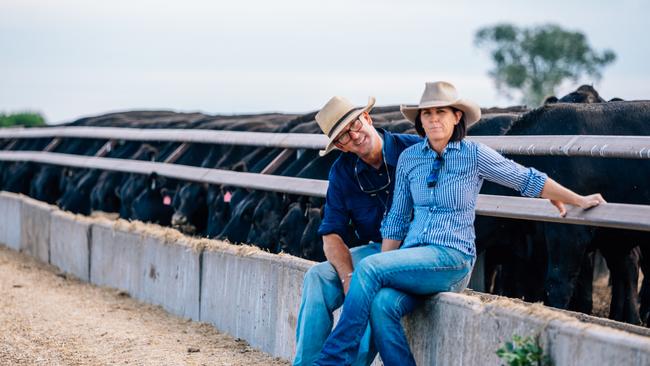
The Shaws use bulls from Millah Murrah Angus in both paddock joining and artificial-insemination programs, striving to maintain a fertile, functional cow herd. They aim to increase the scale of their business with more breeders and throughput in the feedlot.
Jeremy says they are also currently considering more environmental and sustainable options for land management including carbon sequestration, reducing paddock sizes, increasing water points, monitoring vegetation management practices, and improving soil to prevent erosion.
“We are in an age where you have to consider all of those things and they will be a big factor in the coming years,” Jeremy says. “It’s a matter of working towards those goals.”



